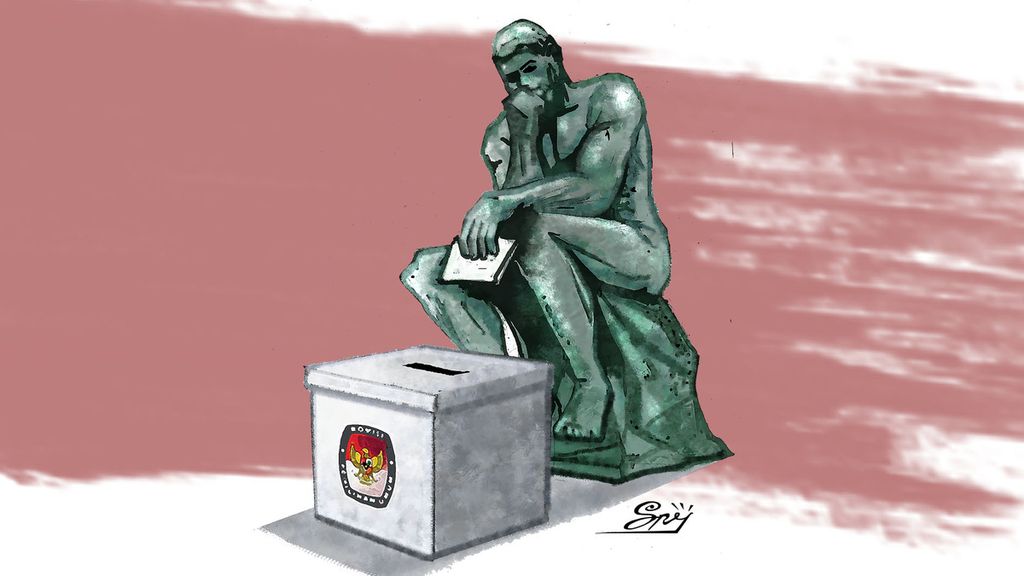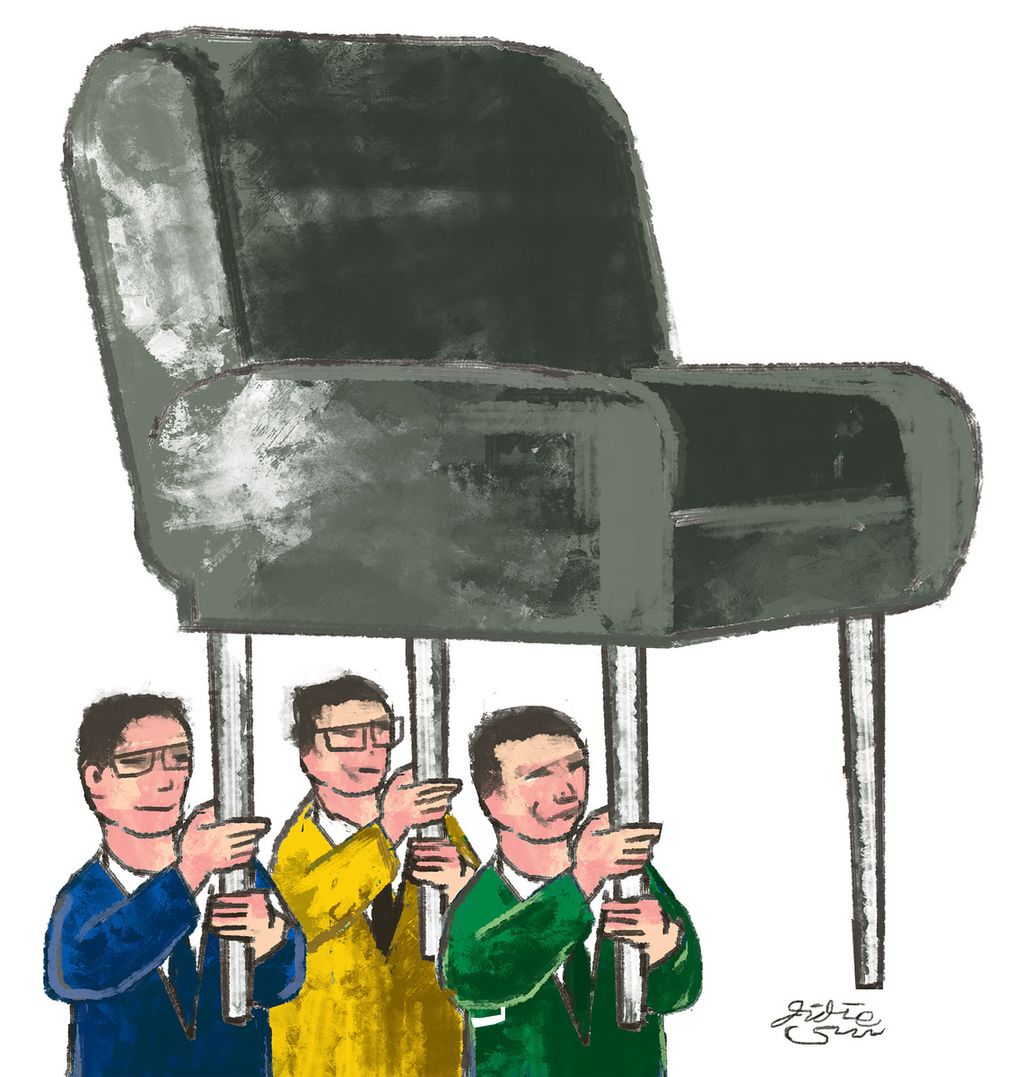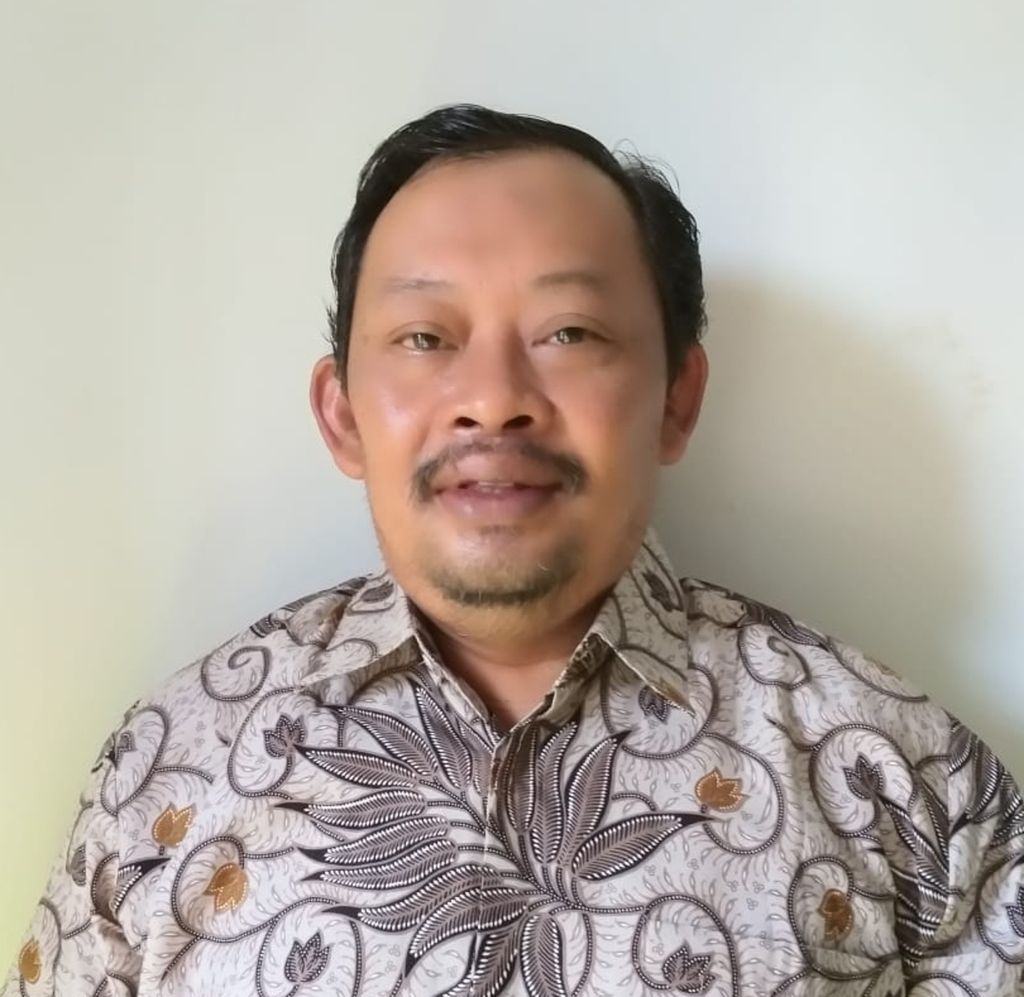Disorganized Verification of Political Parties
A transparent verification stage can minimize allegations of irregularities that could be considered as malpractice in election governance.

The hot issue of political party verifications that surfaced in the second week of December was very surprising.
The report “Operation to Pass Three Parties” in Tempo magazine was not good news ahead of the process to determine the political parties contesting the 2024 General Election on 14 Dec. 2022.
Subpoenas presented to nine members of the General Elections Commission (KPU) in five regencies/cities and two provinces, including technical employees of regional KPU secretariats for alleged intimidation, are also important to note (Kompas, 14/12/2022).
Allegations of data manipulation and intimidation in the process of political party verifications will not be tolerated by the KPU.
Also read:
The reason is clear: The verification of political parties is one of the benchmarks for organizing an election that possesses integrity and honesty, and is fair, transparent and accountable.
The verification of political parties is also very crucial in the stages of the election. If the process is flawed, it will affect all subsequent stages that involve political parties as election participants.
This is where the substantial value of political party verification lies in the stages of Indonesia’s elections. Aside from providing a foundation for the subsequent stages, political parties are the main election actors who will be providing human resources in the legislative and executive leadership.
Not surprisingly, the verification of political parties always attracts the attention of many parties. Apart from being a highly decisive stage for the future of political parties in Indonesia, it is also often tinged with political interests and biases.
Different paradigm
The verification of political parties for the 2024 election is actually different from the political party verification stage in the previous election.
The difference is due to Constitutional Court (MK) Decision No. 55/PUU-XVIII/2020, which requires only one administrative stage to verify those political parties that reached the legislative threshold in the previous election.
Meanwhile, newly established political parties and/or old parties that do not reach the legislative threshold must pass two verification stages, administrative and factual.
From the perspective of the Indonesian elections, political party verification is intended to audit political parties as institutions, in terms of their management, workplace, 30 percent representation of women, and total membership in an election period.

In addition to checking that they have fulfilled the requirements for election participants, administrative and factual verification can also describe the political parties’ institutional development over time.
Unfortunately, the Constitutional Court ruling above changed that paradigm. As a result, administrative reports on the KPU’s Sipol online system are merely textual, and not contextual.
Old political parties that reach the legislative threshold will only undergo administrative verification, the results of which can be different from the institutional reality. Meanwhile, new parties and parties that did not reach the legislative threshold must undergo two stages of verification. As a result, the political party verification process follows three different regulatory regimes.
Also read:
> Political Party Electability Volatility
The first regulatory regime is the Law and Human Rights Ministry’s requirement that a political party be a legal entity. In order to be a legal entity, a political party must meet the minimum requirements: have a central executive board, have a minimum of 75 percent provincial administrators, and have a minimum of 50 percent regency/municipal administrators.
Second, the regulatory regime for electoral participation is divided in two. These requirements are somewhat different from the first regulatory regime, in that political parties must have a central executive board, 100 percent provincial administrators, 75 percent regency/municipal administrators, and 50 percent district administrators.
Another difference is that the political parties’ composition must include women in 30 percent of managerial positions and at least 1,000 people or 1/1000 of the total population as administrative members.
The different paradigms of the political party verification to be legal entities and election participants that are not synergized are considered a burden for parties, especially newly established parties. This leads to a costly and lengthy process for political parties, especially new parties.
This "buying and selling" of legal entity status occurs because of the lack of statutory regulations and audits of the legal status of political parties.
These two verification regimes have often been criticized, but solutions have never been sought. The implication is that political parties experience a double burden each time an election approaches. On the one hand, they have to pass through a “pinhole” to be verified as election participants; on the other hand, they must possess organizational readiness for contesting an election.
The winding road to fulfilling the legal entity requirement, which many parties also find difficult, has resulted in some new parties taking "shortcuts" to obtain their legal entity status. The phenomenon of "buying and selling" to obtain legal entity status so they can register as election participants is only the tip of the iceberg of the issues surrounding political party verification.
"Buying and selling" activities are usually carried out by changing the political party statutes by changing the party’s name. A number of parties that participated in the 2019 elections obtained their legal entity status in this way.
In the 2014 elections, it was recorded that, for example, the Independent People's Union Party (SRI) and the Republican National Party (PNR) did the same thing, namely using the legal entity status of existing parties.
This "buying and selling" of legal entity status occurs because of the lack of statutory regulations and audits of the legal status of political parties.
As a result, the KPU must continue to use the number of political parties that are legal entities as a basis for registering parties as election participants. Until now, there are still hundreds of political parties that are registered as legal entities with the Law and Human Rights Ministry.

Prone to dispute
As a method, political party verification must meet scientific tests of validity and reliability.
That is, independent parties and/or the Elections Supervisory Body (Bawaslu), the Election Organization Ethics Council (DKPP), and the judiciary can trace the methods used by the KPU at all levels when disputes and conflicts occur.
This validity test will determine the procedures and deviations in the KPU’s administrative or factual verification carried out at all levels, as mandated by Article 174, Paragraph (3) and Article 178, paragraphs (3) and (4) of Law No. 7/2017.
Transparent and accountable process and procedure is one of the indicators so that any critical views do not corner the election organizers.
A data manipulation issue can undermine the KPU's decision, because determining the validity of the required documents in a nontransparent manner "often" creates controversy. From a random sampling of the required documents, the most prone to manipulation is usually a political party’s membership data.
Issues about dual membership, using the names of randomly selected citizens (without their consent), ensuring there are no members of the Indonesian Military (TNI), National Police (Polri) or civil service (ASN), as well as minors below 17 years old in a political party’s membership are the dominant issues related to the legal requirements for political parties taking part in an election.
Also read:
> 2024 Political Party Contestation Toughens
> Healthy Politics for the People
The validation method for a sample of members provided by a political party, with a party with 100 members providing a sample of 10 percent (10 members) and a party with more than 100 members providing a sample of 5 percent (of its total membership) from 50 percent of all regencies, can give rise to a paradox.
Even though the sample list of members comes from the political parties themselves, their factual verification often causes disputes.
Even though it is regulated in PKPU Regulation No. 4/2022 on verification requirements, the most complicated part of factual verification is a party’s membership. In general, new parties fail to meet the requirement (MS/TMS) in six categories, namely members that come from the ASN, TNI, or Polri, members under the age of 17 and single married, dual membership within a party and dual membership in two or more parties.
The 30 percent requirement for women’s representation in a party’s executive/administrative division is also often a scourge for new parties. Disappointment and disputes often arise due to different perceptions in interpreting the results, which seem to find flaws in the requirements, but are considered by the parties as only minor discrepancies.
The commotion over the political party verification stage should not have occurred today, when the election organizers had prepared scientific tests to mitigate shortcomings, and when Bawaslu and political parties were also committed to proving the validity of the methods and results of factual verification.
Apart from that, a transparent verification stage can minimize allegations of irregularities that could be considered as malpractice in election governance.

Moch Nurhasim
Moch. Nurhasim
Director of Political, Legal, Defense and Security Policies at the National Research and Innovation Agency (BRIN)This article was translated by Kurniawan Siswo.